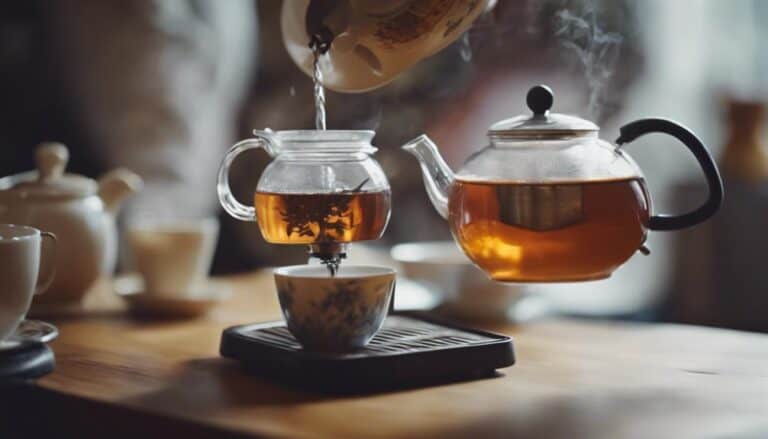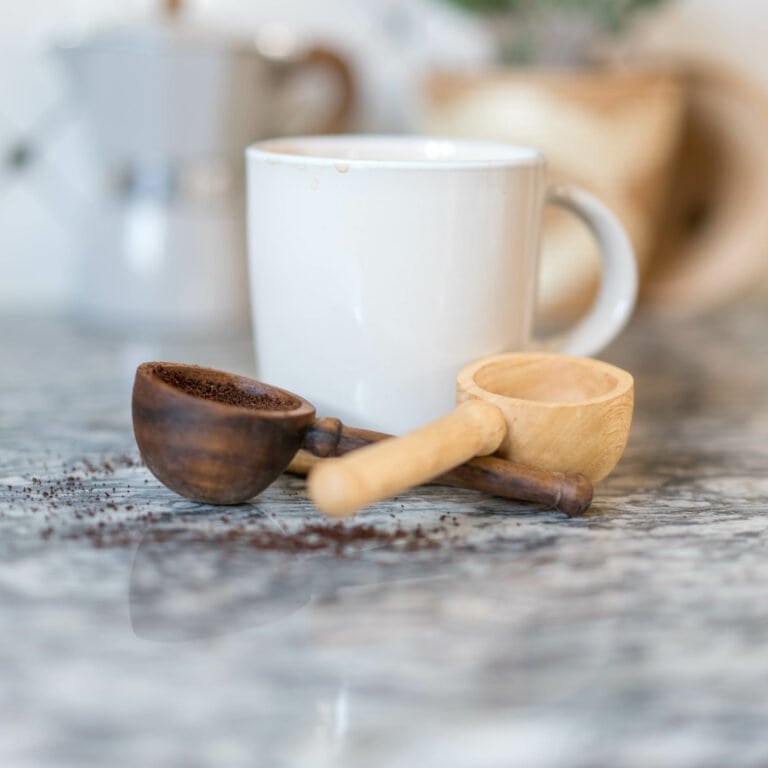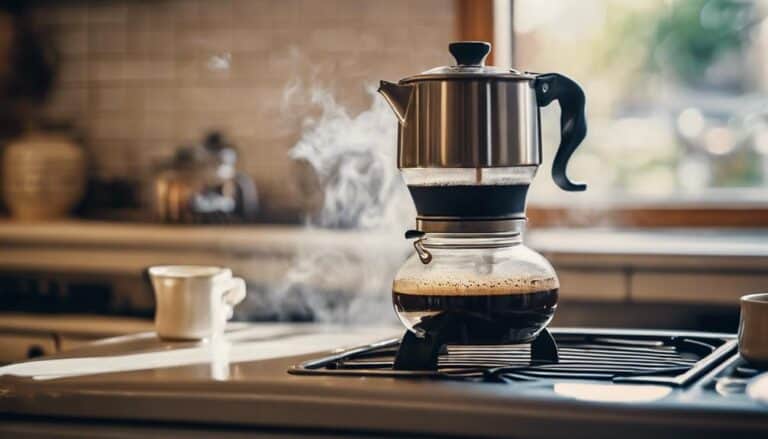Tea Straining Without a Tea Strainer: The Basics
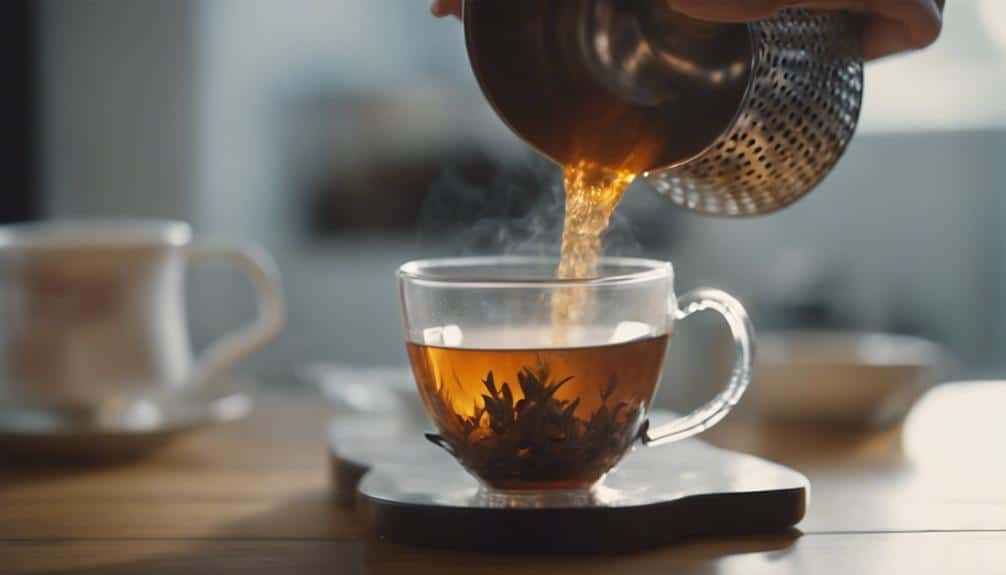
When faced with the dilemma of lacking a tea strainer, exploring alternative methods becomes essential for a seamless tea-drinking experience. From utilizing household items like a mesh strainer or a simple spoon to more unconventional techniques such as employing a coffee filter or kitchen roll, there are various ways to achieve a perfectly strained cup of tea. Each method brings its unique twist to the art of tea preparation, offering both convenience and ingenuity. Let's uncover these inventive solutions together.
Mesh Strainer Method
When straining tea without a tea strainer, one can effectively utilize the Mesh Strainer Method for a refined tea-drinking experience. Mesh strainers, available in various sizes to suit different cup sizes, are invaluable tools for brewing tea. Made of durable stainless steel, these strainers feature fine mesh that allows liquid to flow while capturing tea leaves and other particles. This method is particularly useful for different types of tea, ensuring a smooth texture without any debris, enhancing the overall taste and presentation.
To brew tea using the Mesh Strainer Method, simply place the strainer over your cup or teapot and carefully pour the brewed tea through it. The mesh will effectively strain out the leaves, leaving you with a clear and pure tea ready to be enjoyed. This process guarantees a delightful tea-drinking experience, free from unwanted bits that may alter the taste. Whether you prefer black, green, or herbal teas, the Mesh Strainer Method is a simple yet effective way to elevate your tea time.
Direct Steeping and Spoon Method
Utilizing the direct steeping and spoon method allows for the enjoyment of loose leaf tea without the need for a traditional strainer. When preparing green tea using this method, simply add loose tea leaves directly into hot water without a strainer. Take a spoon and gently stir the tea leaves to aid in the brewing process. Allowing the tea leaves to settle at the bottom of the cup before sipping enhances the experience.
While direct steeping and the spoon method are convenient, bear in mind that this technique may result in some tea leaves lingering at the bottom of your cup. However, for those who value the freedom of brewing loose leaf tea without the constraints of a strainer, this method offers a simple and enjoyable alternative. Embracing the direct steeping and spoon method provides a unique way to savor the rich flavors of loose leaf green tea, offering a sense of liberation in your tea-making routine.
Coffee Filter Technique
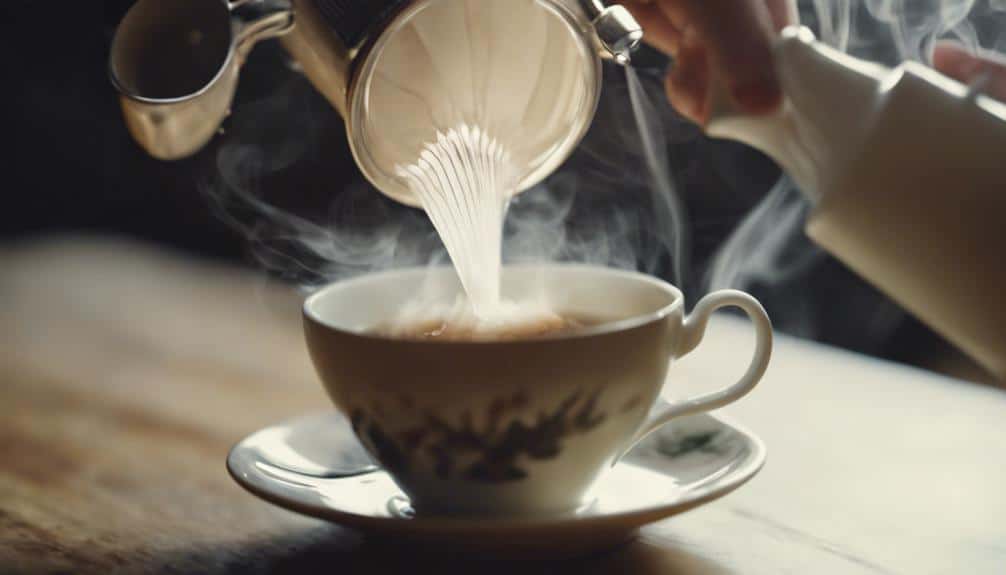
To explore an alternative method for straining loose leaf tea without a traditional tea strainer, tea enthusiasts can turn to the Coffee Filter Technique. This method utilizes common household items, making it a convenient and practical choice for those looking to enjoy their tea without an infuser.
By using spare paper filters, tea lovers can easily separate the tea leaves from the brewed liquid. Rinsing the coffee filter with hot water before use is essential to remove any potential paper taste that could affect the tea's flavor.
Once the filter is prepared, simply place it over a separate cup, pour the hot water and tea mixture through it, allowing the filter to catch the leaves while letting the infused liquid pass through. After brewing, the filter can be discarded along with the used tea leaves, ensuring a clean and hassle-free process.
This method isn't only efficient but also minimizes clean-up, making it a great option for those seeking a simple way to enjoy their favorite loose leaf teas.
Kitchen Roll Innovation
An innovative approach for straining loose leaf tea without a traditional tea strainer involves folding a kitchen roll into a square shape to create a makeshift filter. This impromptu strainer can be easily placed in a mug while brewing tea to effectively strain out the leaves.
Once the tea is brewed to your liking, simply remove the kitchen roll to enjoy a freshly strained cup of tea. This method is quick, easy, and requires minimal cleanup, making it a convenient solution for everyday tea brewing.
Using a kitchen roll as a strainer provides a simple and innovative way to enjoy loose leaf tea without the need for a traditional tea strainer, offering freedom and flexibility in your tea-making process.
Whether you're in a hurry or looking for a hassle-free tea brewing experience, this kitchen roll innovation offers a smooth and enjoyable tea-drinking ritual.
Sieving Tea Leaves
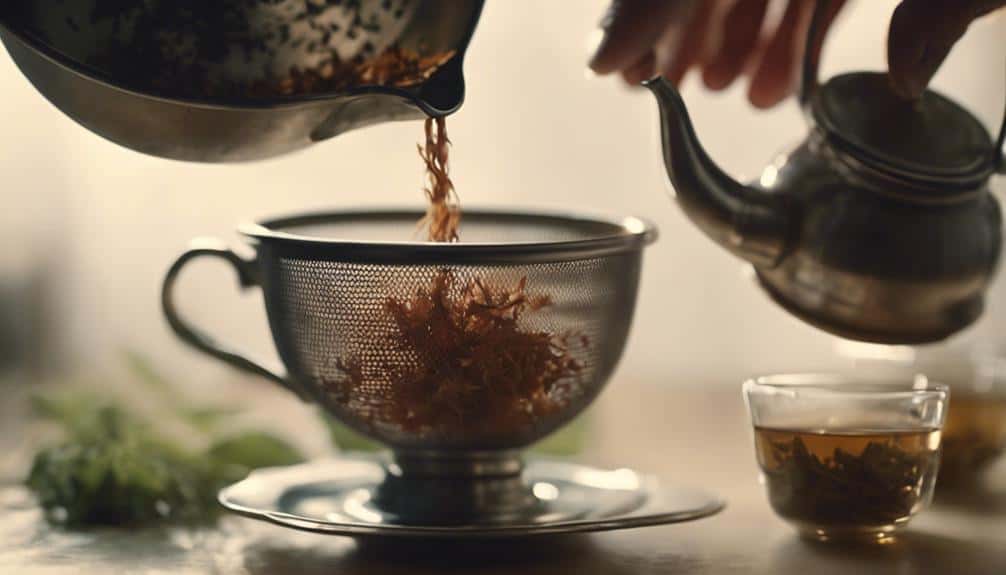
When sieving tea leaves, it's essential to employ simple techniques using common household items like a kitchen sieve.
This method allows for a quick and effective way to filter out tea leaves, ensuring a smooth and enjoyable tea-drinking experience.
Simple Sieving Techniques
Sifting tea leaves through a common kitchen sieve yields a finely filtered cup of tea without the need for a traditional tea strainer. To sieve at home, pour the tea through the sieve into another mug, allowing the leaves to expand and infuse the water while ensuring a leaf-free final drink. A key component of this method is to make sure the sieve is fine enough to catch the leaves effectively. This simple technique is convenient and requires only basic kitchen equipment. Below is a table highlighting the simplicity and effectiveness of using a sieve for tea straining:
| Simple Sieving Techniques | Benefits | Tools Needed |
|---|---|---|
| Easily accessible | Clean cup of tea | Common kitchen sieve |
| Quick and efficient | No leaves in the drink | Another mug |
| Minimal cleanup required | Smooth tea texture |
Common Household Alternatives
Using a fine-mesh kitchen sieve to strain loose leaf tea offers a practical alternative for those without a tea strainer. When brewing loose leaf tea, simply place the sieve over your cup and carefully pour the brewed tea through it. The fine mesh will effectively filter out any loose tea leaves, ensuring a smooth and enjoyable tea-drinking experience.
This method is convenient and quick, making it a suitable option for those who don't have a traditional tea strainer at hand. It's a simple solution that requires minimal effort and basic kitchen tools.
Improvising With Everyday Items
To guarantee loose leaf tea without a traditional tea strainer, one can effortlessly repurpose a fine-mesh kitchen sieve for a seamless filtering process. Simply pour the brewed tea through the sieve into another mug for a quick and effective way to strain out tea leaves.
This improvising method is convenient and doesn't require any specialized tools, making it a practical solution for those looking to enjoy a clean cup of tea without loose leaves or debris. By using a sieve, you guarantee that your tea is smooth and free of any unwanted particles, enhancing your overall tea-drinking experience.
This quick and simple technique is perfect for those moments when you need a speedy tea straining solution without compromising on quality.
Slotted Spoon Hack
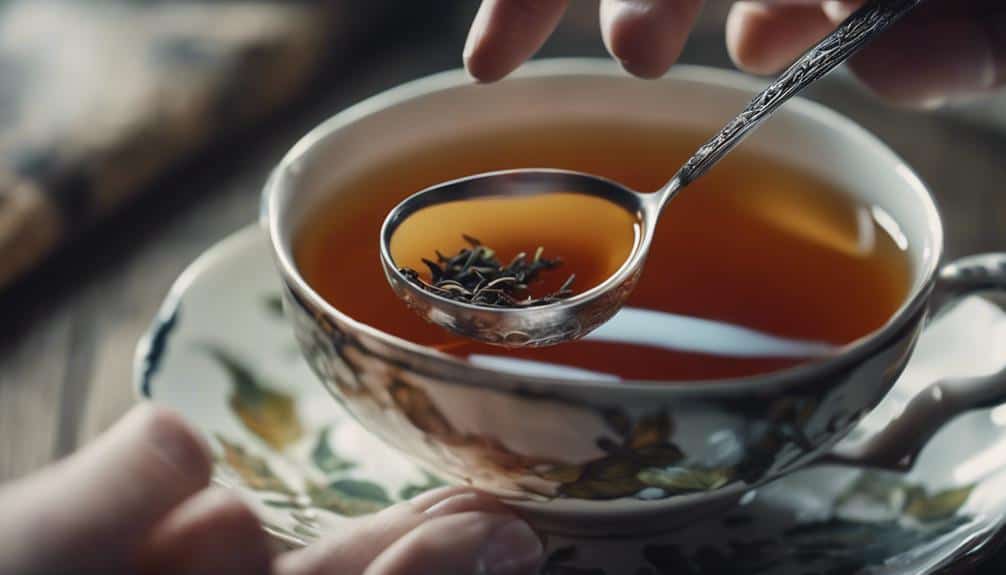
When it comes to straining tea without a tea strainer, one ingenious method is utilizing a slotted spoon.
The slotted design allows for a quick and efficient way to separate tea leaves from the brewed liquid.
Depending on the size of the slots, one can adjust the effectiveness of this hack for various tea types.
Spoon Straining Technique
Employing a slotted spoon as a makeshift tea strainer provides a straightforward solution for filtering loose leaves from freshly brewed tea. This quick and easy straining technique guarantees that no tea leaves end up entering the cup, maintaining a smooth drinking experience.
The effectiveness of this method relies on the size of the slots in the spoon, with smaller slots offering better filtration. The spoon straining technique is particularly suitable for specific types of tea that require immediate straining after brewing.
When a traditional tea strainer isn't at hand, using a slotted spoon proves to be a convenient alternative, allowing for a seamless tea-drinking experience without the need for specialized equipment.
Alternative Tea Strainers
Continuing from the spoon straining technique, utilizing a slotted spoon as an improvised tea strainer offers a practical and effective solution for filtering loose tea leaves during the pouring process.
The slotted spoon hack is an efficient way to filter out tea leaves without needing a traditional tea strainer. When using this method, the size of the slots in the spoon plays an essential role in effectively straining different types of tea.
Pouring brewed tea through a slotted spoon guarantees a smooth and leaf-free cup of tea every time. This technique proves to be a convenient and straightforward option for those seeking to enjoy a well-strained cup of tea without specialized equipment.
Improvising With Tools
Utilizing a slotted spoon as an improvised tea strainer offers a practical and effective solution for filtering loose tea leaves during the pouring process.
For tea drinkers in need of a quick fix, the slotted spoon can be a handy tool to separate the leaves from the brewed tea. By pouring the tea through the slots, this method efficiently filters out unwanted particles, ensuring a smooth and leaf-free drinking experience.
The slotted spoon's design allows for easy removal of larger leaves while preventing them from reaching your cup.
While the effectiveness of this method may vary depending on the size of the slots and the type of tea being brewed, it remains a convenient and accessible option for those looking to enjoy a freshly strained cup of tea.
Conclusion
To sum up, when faced with the absence of a tea strainer, there are several effective methods to strain your tea and enjoy a smooth cup. Whether using a mesh strainer, direct steeping and spoon method, coffee filter, kitchen roll, sieving, or a slotted spoon, you can easily achieve a debris-free tea experience.
With these simple techniques, you can continue to enjoy your favorite teas without the need for a traditional strainer.
